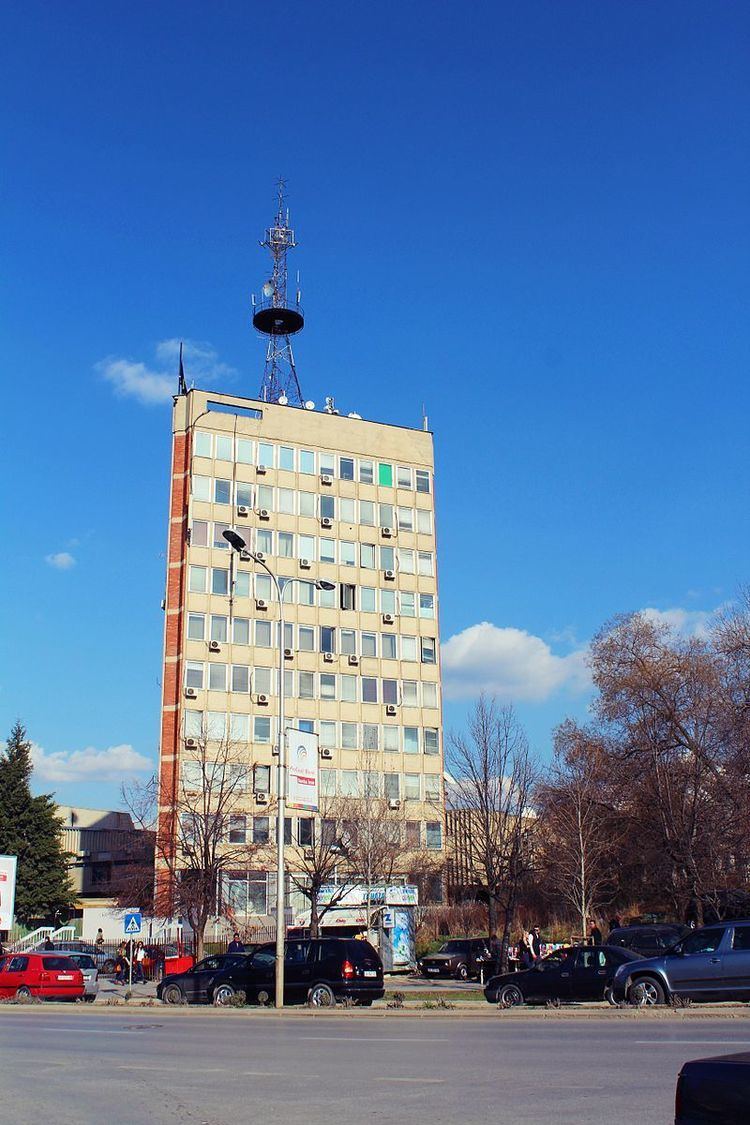 | ||
The media in Pristina include some of the most important newspapers, largest publishing houses and most prolific television studio. Pristina is the largest communications center of media in Kosovo. Almost all of the major media organizations in Kosovo are based in Pristina.
Contents
The television industry developed in Pristina and is a significant employer in the city's economy. The four major broadcast networks, RTK, RTV21, KTV and KLAN KOSOVA, are all headquartered in Pristina. Radio Television of Kosovo (RTK) is the only public broadcaster both in Pristina and in all of Kosovo as well, who continues to be financed directly by the state. All of the daily newspapers in Pristina have a readership throughout Kosovo.
An important event which affected the development of the media, is that in University of Pristina since 2005 is established the Journalism Faculty within the Faculty of Philology in which a large number of young people are registered.
Media in Pristina have followed all elections held in Kosovo, especially a great impact was noted in Kosovo local elections, 2013,where media dedicated most of their time in political debates,advertisements and political parties programs.
The freedom and pluralism of the media is guaranteed by the Constitution of Kosovo. Censorship is forbidden, except in the cases of provocation of violence and discrimination. In according to organization Reporters without borders in 2013 Kosovo was ranked in the 85th place, after a year Kosovo made progress and was ranked in the 80th place.
Newspapers
The first newspaper was "Rilindja" (Renaissance), first came out on February 12, 1945 in Prizren, and was the first newspaper in Albanian language inside Yugoslavia. It was initially printed in State Printing Shop in Prizren during the issues 1 to 60. Since issue 61 it was printed in Pristina Regional Printing House of the People's Front.
In the beginning, it had only four pages, being published weekly until June 27, 1948. After that it begins to come twice a week, on Sundays and Thursdays. Then, from November 1958 starts out as a daily paper (beside Fridays). By the year 1964 it appears every day in a 20-page standard format, while on Saturdays and holidays in a 24-32 page format. On September 5, 1990, the Serbian government banned its publication, while the entry of NATO forces, on June 12, 1999 it appears again, but this time with additional pages and some of them in color.
It was undoubtedly one of the major sold newspapers on the Albanian sphere. Its maximum circulation has arrives during New Year holidays, up to 234,000 copies.In 2002, the premises were blocked by UNMIK administration and listed as a property of Kosovo Agency of Privatization, shutting it down abruptly. Nowadays two most popular newspapers are Koha Ditore and Kosova Sot but,in the absence of an official,impartial survey, both of them claim to be the most-read newspaper in Kosovo.Newspapers use three systems of distribution,the most used system is Rilindja's system,but some newspapers as Koha Ditore and Bota Sot in their attempt to hide the correct information about readership,they have developed their own systems of distribution.
Magazines
The first writings magazines in Kosovo began in the early 40th and one of the first publications was Literary magazine of Albanians "Jeta e re"(The new life) was given in the newspaper "Rilindja"(Renaissance) on July 17, 1949 as one of the most influential magazines in the country.At that time there were many other magazines quite important, which with their work were known throughout the country. Some of magazines were: The newspaper "Zani i rinisë" (The Journal of Pioneers) which in 1946 was converted into Literary magazine for children "Pioneri" (Pioneers). In 1946 magazine for cultural and social issue "Përparimi" (The Progress) which from 1955 comes as magazine for culture, Literary magazine "Jeta e re"(The New life),then health education magazine "Shëndeti" (The Health) and some others as "Ndërtuesi" (The Builder), magazine for employees "Agimi" (The Sunrise), "Zora"-Women´s Antifascist Front, "Bujku i ri"(The Young Farmer), whereas today most popular magazines are listed in this table:
Radio
Radio Pristina started transmission immediately after the World War II in Prizren 1945 (later to be transferred to Pristina) and it was founded by Parliament of Kosovo province.Radio transmitted in Albanian, Serbian and Turkish language. October 1999 OSCE transfers the resurrected public radio station Radio Pristina to RTK. It is re-launched as Radio Kosovo. Radio Kosovo is the first radio that transmitted news in English language,news edition called 'Live at Five' is still transmitted at 17:00.
Television
Television in Pristina has its beginnings on 26 November 1975, Radio Television of Pristina or RTP (Albanian: Radio Televizioni i Prishtinës, Serbian: Радио-телевизија Приштина, Radio-televizija Priština) was the first Albanian television channel in Kosovo, and it was part of JRT and had its building in Kosovo's capital Pristina (then a Yugoslav Autonomous Province). Both radio and television transmitted in Albanian, Serbian and Turkish language. Television discontinued transmission on 10 June 1999 and was relocated to Central Serbia, later it was dissolved. After the Kosovo war, material and buildings of Radio Television Pristina are under the administration of Radio Television of Kosovo,and have been established two other television RTV21 and KTV .
Cable and Internet
Internet coverage is widespread but it experiences frequent outages. As of December 2013, the number of internet subscribers was 156,408 or 52.65% household penetration rate. In an effort to harmonize existing audiovisual media legislation with EU directives, Kosovo’s Independent Media Commission (IMC) issued regulations on licensing fees, cable operators, and protection of minors and children. Expansion of cable operators increased media diversity by bringing local and national TV stations, as well as special cable stations, to the public.
The following are some of the main internet providers:
